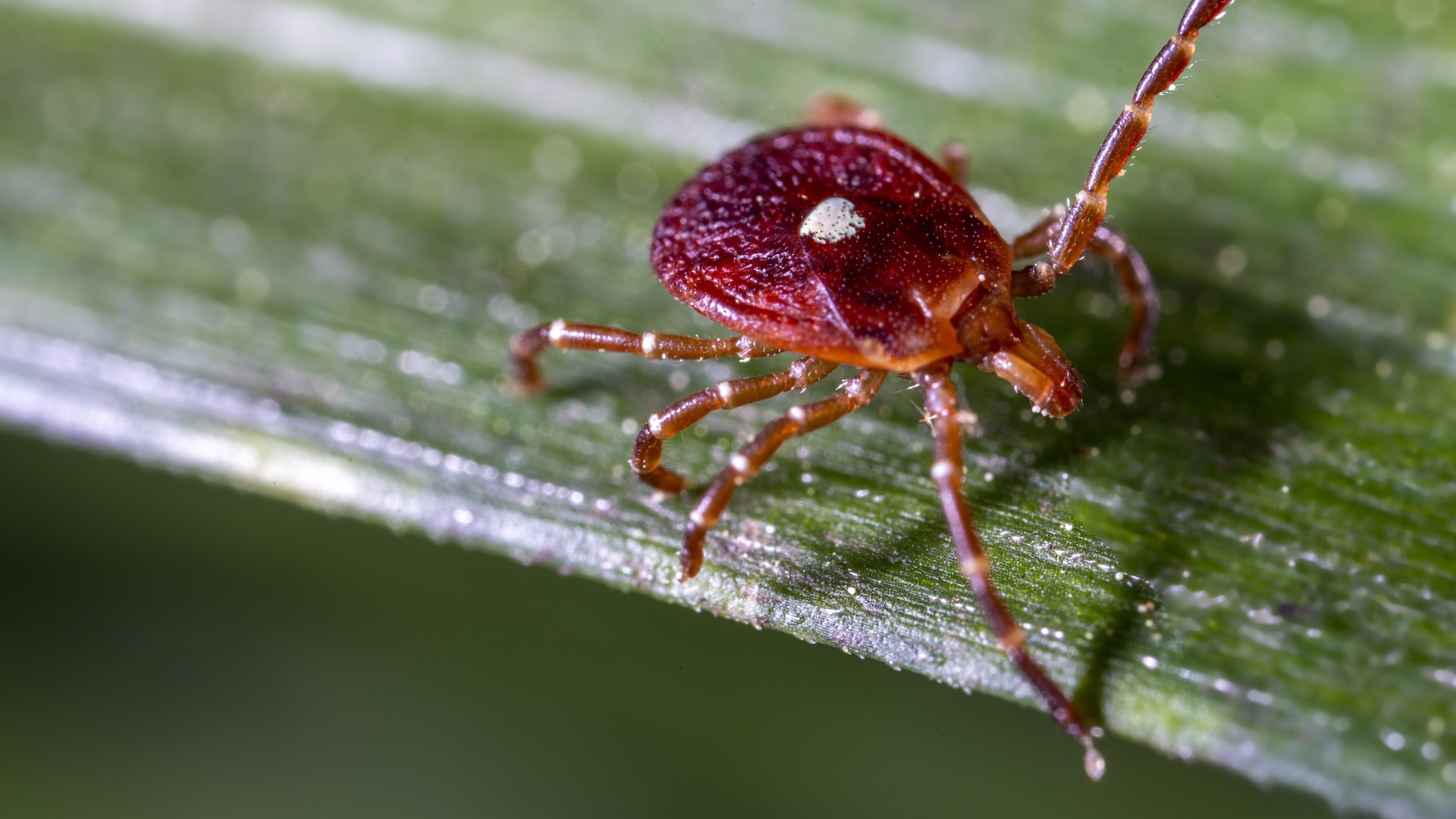Invasive Species
West Nile Virus

Illustrated is a picture of a mosquito. Mosquitoes are West Nile Virus carriers that become infected when they feed on infected birds. Infected mosquitoes can then spread West Nile Virus to humans and other animals when they bite. West Nile is a virus mainly transmitted to people through the bite of an infected mosquito. Mosquitoes transmit the virus after becoming infected by feeding on the blood of birds, of which carry the virus. Since 1999, West Nile Virus has been detected in humans, horses, birds, or mosquitoes in 47 states in the United States. According to the U.S. Centers for Disease Control and Prevention, as of 13 November 2003, the CDC has received confirmation from state agencies of 8219 human cases of West Nile Virus for the year, resulting in 182 deaths. Statistically, a person's risk of contracting West Nile is low. In most areas where the virus is established, only 1% of the area's mosquitoes carry the virus.
Fire Ants
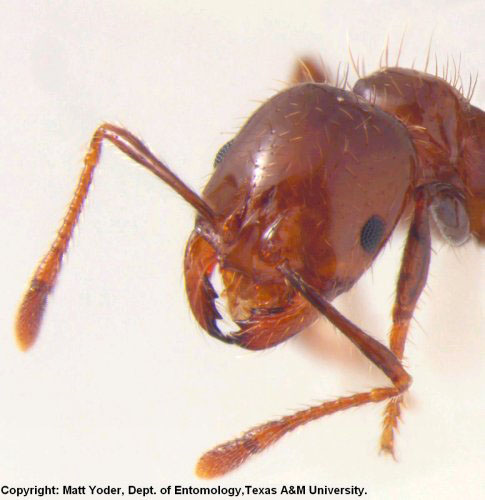
A native of South America, it was accidentally introduced to the USA in the 1930s. It is currently found in 13 states of the USA, and is dispersing into the West Indies. They are quite small, varying from 2 - 6mm in length, and are predominantly reddish-brown in color. Their nests are dome-shaped mounds up to 40cm high. They can give a fiery sting, and are dangerous to children, and infrastructure, including many electrical systems. Fire Ants also have a significant environmental impact. Where they invade, they reduce biodiversity including other ant species, invertebrates and reptiles. This in turn threatens other animals and plants that might be dependent upon these organisms. They are aggressive and kill frogs, lizards, and small mammals.
Kudzu
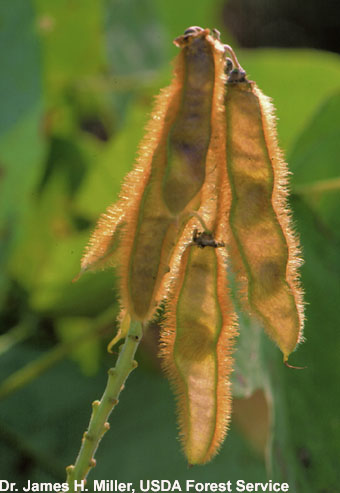
Kudzu is a semi woody vine, a legume, with a twining and trailing growth habit that can form dense infestations covering ground and trees. It is reported to infest about 2 to 3 million hectares in the Eastern U.S. and results in estimated loses of $500 US million per year in land productivity and control costs. Twining and trailing, semi woody vine, 10-30 m long, from semi woody tuberous roots weighing up to many kilograms and reaching up to 1-5 m deep. Leaves are alternate, 3-leaflet, with leaflets 8-18 cm long and 6-20 cm wide, usually slightly lobed. Flowers in reddish-purple spike-like racemes. Fruit a flattened legume, brown hairy, splitting to release few seeds, oval and hard-coated.
Brown Tree Snake
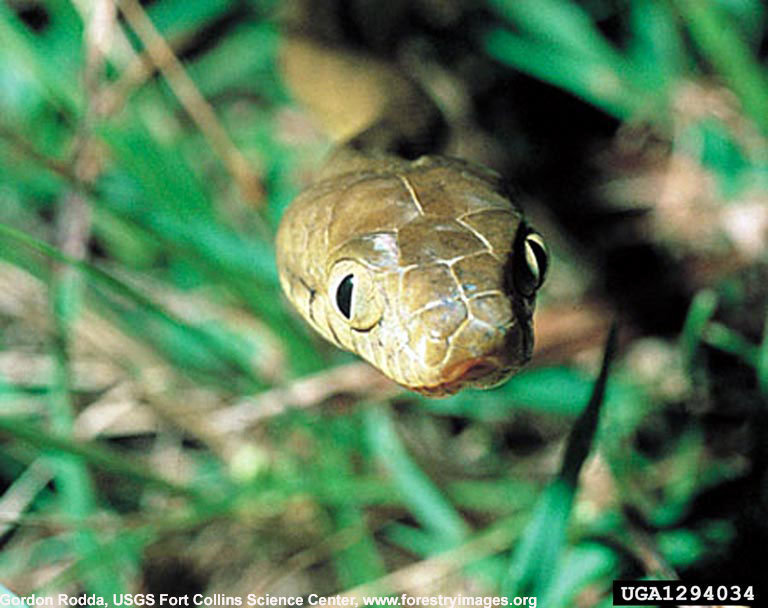
Distinguishing characteristics for the Brown Tree Snake include: a vertical pupil; rear fangs; a large head in relation to the body; and a brownish or greenish coloring, with cross-band markings. About 18” at hatching; grows to about 3’ in first year. Adults can grow to 8’ and weigh up to 5 lbs. Secretive and nocturnal, the Brown Tree Snake can coil itself in small, highly confined hiding spaces. Brown Tree Snakes are believed to have transported by U.S. military ships to Guam, during World War II. Since 1978, more than 1200 power outages on Guam have been caused by the Brown Tree Snake, which frequently scales power lines and transformers. The outages and damage to equipment represent a significant economic burden to the island. In addition, the species has virtually wiped out the native forest birds of Guam, including the flightless rail. Also, twelve species of bird unique to the island have disappeared as a direct result of Brown Tree Snake predation.
Purple Loosestrife
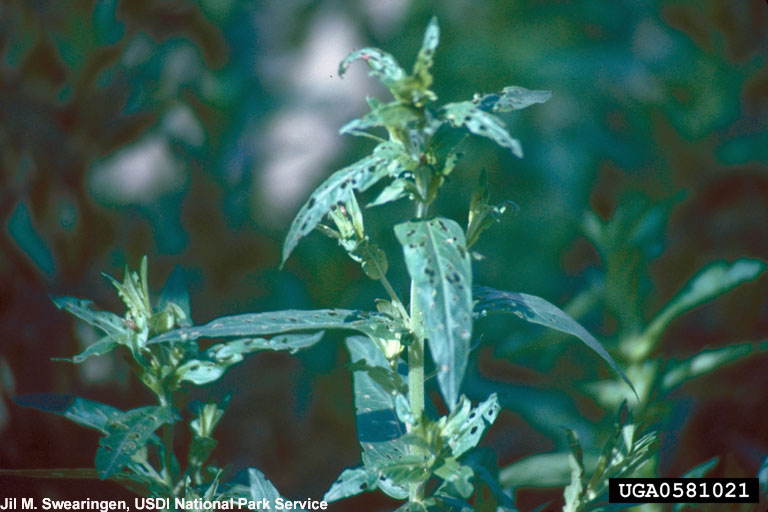
Purple Loosestrife is an erect perennial herb with a square, woody stem and opposite or whorled leaves. Loosestrife plants grow from four to ten feet high, and the flowers usually have five to seven petals. Purple Loosestrife adapts readily to natural and disturbed wetlands. As it establishes and expands, it out competes and replaces native grasses, sedges, and other flowering plants that provide a higher quality source of nutrition for wildlife. The highly invasive nature of Purple Loosestrife allows it to form dense, homogeneous stands that restrict native wetland plant species, including some federally endangered orchids, and reduce habitat for waterfowl. It is dominant in the United States (except Florida), and also in many southeastern countries.
Asian Clam
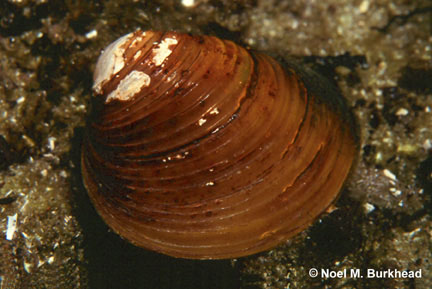
Asian Clam is a freshwater species inhabiting southern and eastern Asia and Africa, and can also be found in fresh waters throughout the United States. The Asian Clam is a known biofouler in power plant and industrial water systems and has also caused problems in irrigation canals and pipes. Ecologically, this species can alter benthic substrates and complete with native mussel species for food and space. In addition, Asian Clams appear to be capable of tolerating polluted environments better than many native bivalves. In some cultures, the Asian clam is marketed for human consumption and as feed for domestic fowl (Aguirre and Poss 1999). In the United States, it is sold as fish bait (Aguirre and Poss 1999), and it is sold through the aquarium trade where they are known as "pygmy" or "gold" clams. Adults can reach 50 mm in length. The shell is ovate and deep at the hinge. The exterior of the shell is normally a yellow-green to brown in color with thick, concentric rings. The inside of the shell is layered with polished, light purple nacre.
Nutria

The Myocastor coypus, also known as Nutria have been introduced in many countries of North America, Europe, Asia, and Africa. It invades rivers, streams, lakes, ponds, especially areas of reed swamp and other marshland communities. It is a large rodent, superficially rat-like, pelage brown and yellow-brown, cylindrical tail. Webbed hind feet, footprint up to 15 cm long, and imprint of web often visible. Feaces cylindrical, up to 70 mm long, with fine longitudinal striations. Their burrows undermine the banks of rivers and dykes. Eating the young shoots of reeds and their rhizomes, they could completely clear entire beds, converting them into open water areas. It threatens the habitat and survival of rare marsh birds, such as bitterns and marsh harriers.
Get the world’s most fascinating discoveries delivered straight to your inbox.
Leafy Spurge
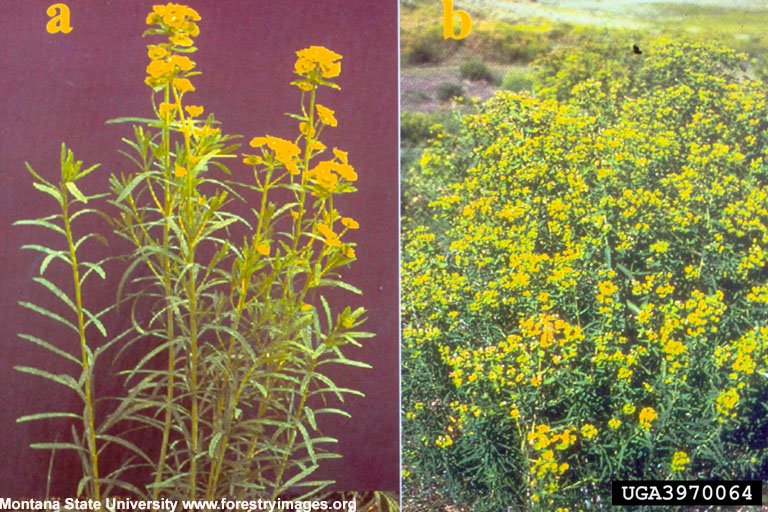
Leafy Spurge is an erect, branching, perennial herb 2 to 3½ feet tall, with smooth stems and showy yellow flower bracts. Leafy Spurge displaces native vegetation in prairie habitats and fields through shading and by usurping available water and nutrients and through plant toxins that prevent the growth of other plants underneath it. Leafy Spurge is an aggressive invader and, once presents, can completely overtake large areas of open land. Leafy Spurge was introduced in the United States in the early 1800’s, and is frequent across much of the northern U.S. Leafy Spurge reproduces readily by seeds that have a high germination rate and may remain viable in the soil for at least seven years, enhancing its chances of recovery over time.
Africanized Honey Bee
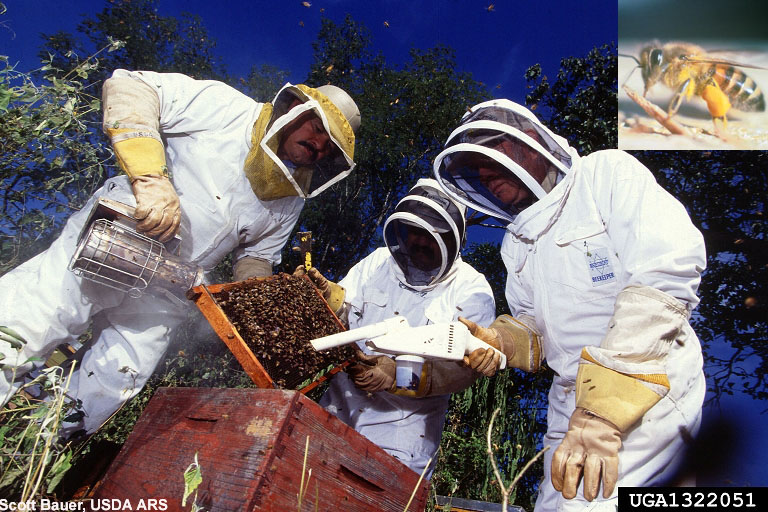
The Africanized Honey Bee, popularly known as the "killer bee," is a "wild" bee that is not comfortable being around people or animals. They are very aggressive, guard a larger area around their hives, become upset more easily by humans and machinery ,respond faster and in larger swarms, and have been known to chase threatening humans and animals for as much as a quarter of a mile. Presently, the killer bees are moving into South Texas and the southern United States. Scientists are not certain how far north the bee will spread, but they do know that it will cause problems wherever it resides in large numbers. In the enlarged picture, ARS chemist Raul Rivera (left), technician Jesus Maldonado (center), and entomologist William Wilson use smoke and a specially modified hand held vacuum to collect Africanized Honey Bees to study the impact of parasitic mites on them.
Water Hyacinth
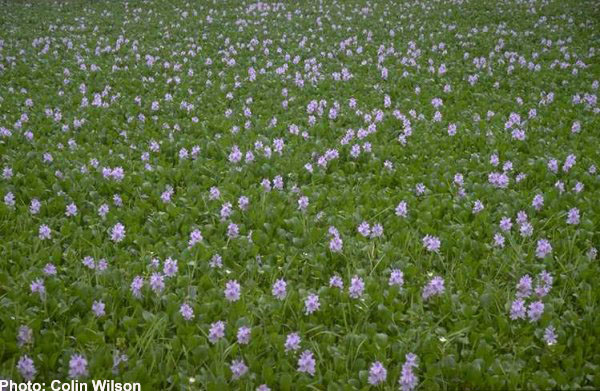
The plant above may appear as nothing more than an innocent flower, but do not be fooled…Shown above is an Inflorescence of Eichhornia crassipes, also known as a Water Hyacinth, at Berrimah, Northern Territory, Australia. Infestations of Water Hyacinth block waterways, limiting boat traffic, swimming and fishing. It also prevents sunlight and oxygen from reaching the water column and submerged plants. Its shading and crowding of native aquatic plants dramatically reduces biological diversity in aquatic ecosystems. Native to the Amazon basin, the Water Hyacinth has now been introduced and cultivated in most warm countries. Shown in the enlargement is an infestation of Eichhornia crassipes near Merauke in Irian Jaya, Indonesia.
Russian Olive
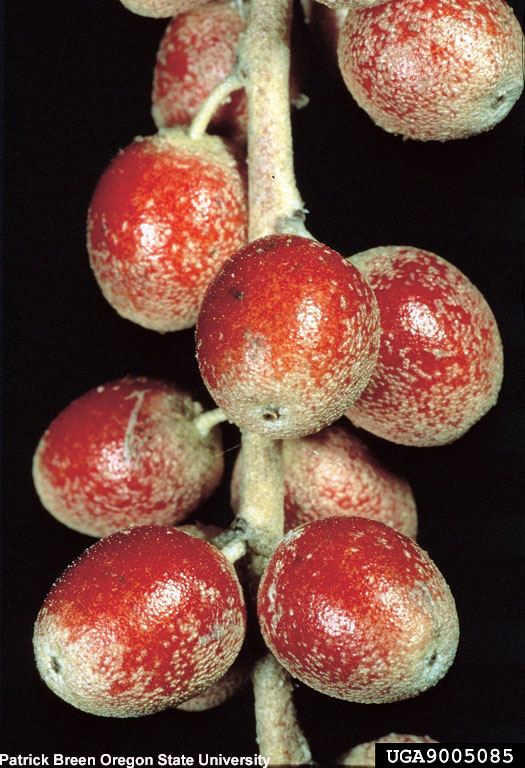
Shown above is damage caused to fruits due to a Russian Olive. The Russian Olive is a small, usually thorny shrub or small tree that can grow to 30 feet in height. Russian Olive can out compete native vegetation, interfere with natural plant succession and nutrient cycling, and tax water reserves. It is typically found in Southeastern Europe and Western Asia. In addition, it is also found in Russian Olive is found primarily in the eastern, central and western parts of the U.S.
